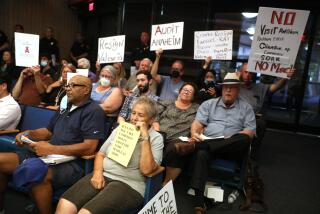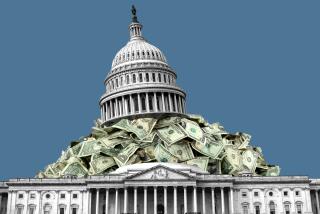Election Reform Is No Sure Bet : How Money Was Spent in ’86 Casts Doubt on Quick Changes
- Share via
Among the conclusions that can be drawn about the role of money in the 1986 congressional elections, perhaps the most significant is that the controversies surrounding its uses have put election reform back on the national agenda.
With Democrats now in control of both the House and the Senate, there will be many calls for legislative action, considerable movement in the form of discussion and hearings, but no certainty that meaningful change will be enacted.
Some changes in laws governing political money are obviously desirable, but no consensus exists even among Democrats on how to revise the Federal Election Campaign Act. The results of the 1986 senatorial elections threw into doubt many conventional beliefs about the effect of money, and may well add to the confusion about proposed remedies.
The complaint most frequently voiced has been that the cost of campaigning has skyrocketed to heights beyond reason, with supposed dire consequences when election outcomes are influenced by amounts spent. Actually, in close Senate contests, candidates who spent less money often were as victorious as those who were better funded. For example, of the 10 candidates raising the most money--seven Republicans and three Democrats--only four won and six lost.
Senate incumbents often found that to be effective, money had to be accompanied by favorable issues and attractive candidates.
Political-action committee money normally goes in much greater measure to incumbents than to challengers. Incumbent Republicans generally outspent their Democratic challengers by ratios of 2-1, 4-3 or 5-3, yet many lost--often by narrow margins. The conclusion is that while challengers tended to be underfunded, they seem to have had sufficient money to present themselves and their messages and to compete effectively. Most significantly, the challengers who won were as dependent on lesser amounts of PAC money for their campaign funds as were incumbents reliant on PAC contributions for their far-greater bank balances.
In 1982 and again in 1984 there were two candidates for the Senate who received $1 million or more from PACs. In 1986 there definitely were four, and there may have been as many as 11--depending on final figures not yet available. But five of the 11 who raised $900,000 or more from PACs lost. So the traditional heavy PAC giving to incumbents did not help some of them win, giving reason to question the conventional and widely shared perception that PAC donations tend to ensure an incumbent of reelection.
At least 11 Senate seats were won with 52% of the vote or less. A guiding rule is that the closer the vote the more effect any small incremental amount of spending may have had. Accordingly, it is difficult to blame candidates, whether incumbents or challengers, for spending extra dollars when poll results indicated that many contests would be won by exceedingly narrow margins, as they in fact were.
House contests tended to demonstrate the opposite, following instead the conventional belief that the candidates who spend the most do win. Most did. Of 26 House contests won with 52% of the vote or less, only eight winners were outspent, according to preliminary figures. Most House incumbents had more money, but, unlike the Senate elections, almost all won. Only five House incumbents lost, but two of the losers were outspent. Preliminary figures indicate that PAC contributions to House winners were amounting to about 41% of total campaign income, compared with about 27% in Senate campaigns.
However one interprets these confusing results in terms of money spent, there were questions about the ways in which spending occurred. Considering the closeness of many Senate elections and the low voter turnout, one wonders whether wiser spending decisions might have allocated more money to voter registration and turnout activities at the grass-roots level rather than to television overkill.
Election reform concerns laws defining uses of money in politics. These include issues of raising individual contribution limits, lowering PAC contribution limits, setting limits on amounts that candidates can accept from all PACs and public funding of congressional campaigns. There will be calls to extend efforts to change broadcasting laws as well, due to the wide use of television in Senate campaigns particularly, and to the negative advertising.
Yet, as always, it will be hard to get incumbents to change election laws under which they were successful. A Democratic Congress enacting reform will likely incur President Reagan’s veto if it includes congressional public financing or strong anti-PAC measures. While prospects for changing campaign rules have increased greatly, the path will not be smooth, because the same campaigning that brought demands for reform has brought new doubts as to which strategies for change are desirable, which have enough support to ensure passage and which may avoid a presidential veto.
More to Read
Get the L.A. Times Politics newsletter
Deeply reported insights into legislation, politics and policy from Sacramento, Washington and beyond. In your inbox twice per week.
You may occasionally receive promotional content from the Los Angeles Times.










